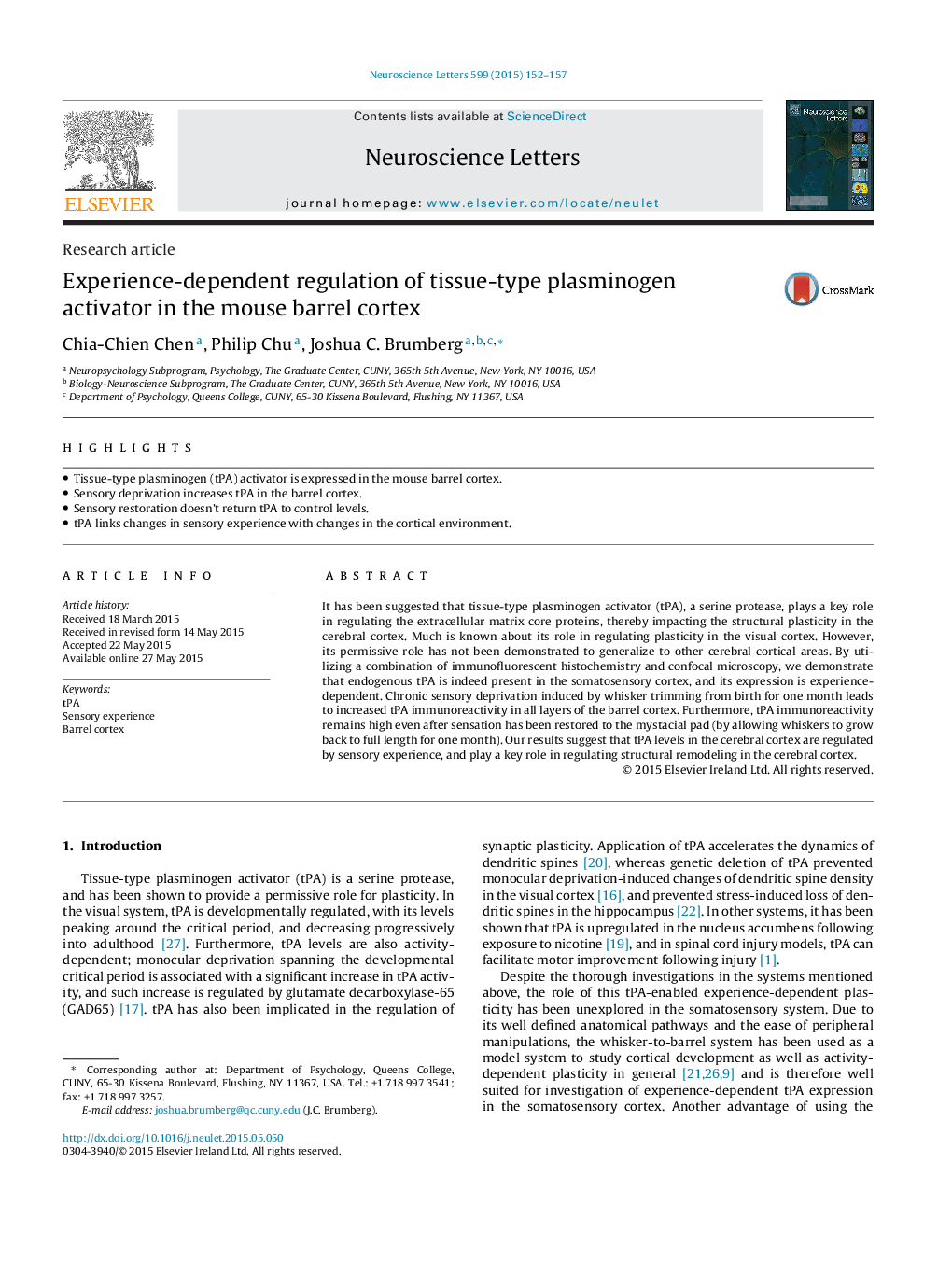| Article ID | Journal | Published Year | Pages | File Type |
|---|---|---|---|---|
| 4343447 | Neuroscience Letters | 2015 | 6 Pages |
•Tissue-type plasminogen (tPA) activator is expressed in the mouse barrel cortex.•Sensory deprivation increases tPA in the barrel cortex.•Sensory restoration doesn't return tPA to control levels.•tPA links changes in sensory experience with changes in the cortical environment.
It has been suggested that tissue-type plasminogen activator (tPA), a serine protease, plays a key role in regulating the extracellular matrix core proteins, thereby impacting the structural plasticity in the cerebral cortex. Much is known about its role in regulating plasticity in the visual cortex. However, its permissive role has not been demonstrated to generalize to other cerebral cortical areas. By utilizing a combination of immunofluorescent histochemistry and confocal microscopy, we demonstrate that endogenous tPA is indeed present in the somatosensory cortex, and its expression is experience-dependent. Chronic sensory deprivation induced by whisker trimming from birth for one month leads to increased tPA immunoreactivity in all layers of the barrel cortex. Furthermore, tPA immunoreactivity remains high even after sensation has been restored to the mystacial pad (by allowing whiskers to grow back to full length for one month). Our results suggest that tPA levels in the cerebral cortex are regulated by sensory experience, and play a key role in regulating structural remodeling in the cerebral cortex.
